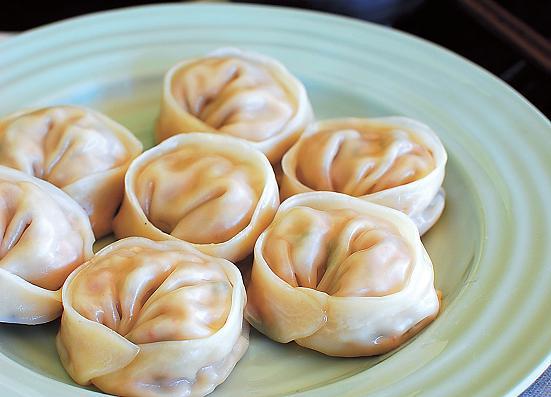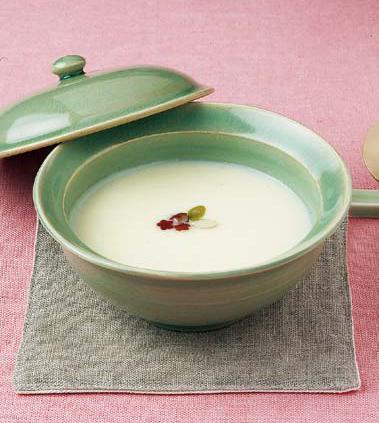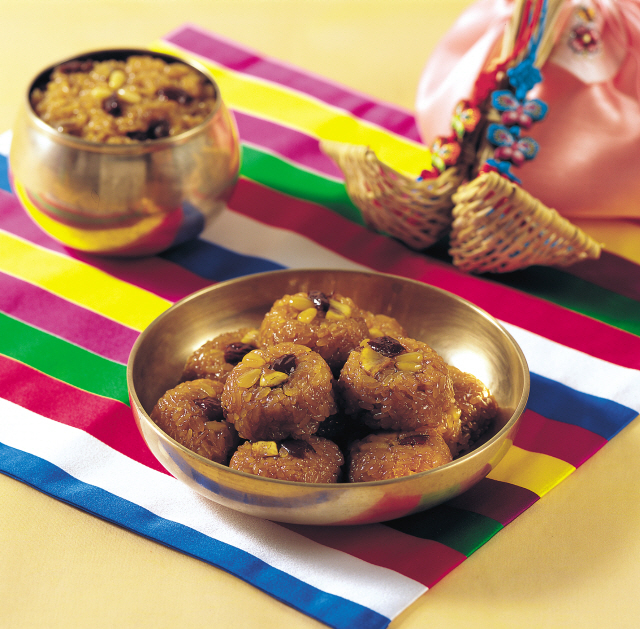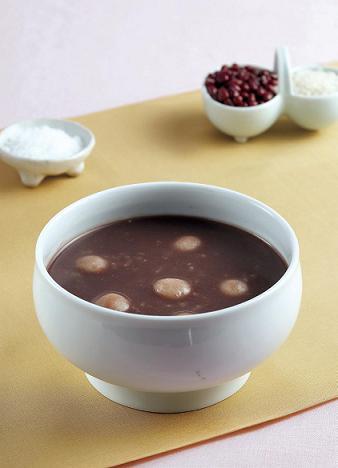Published : 2013-01-18 19:12
Updated : 2013-01-18 19:12
Updated : 2013-01-18 19:12
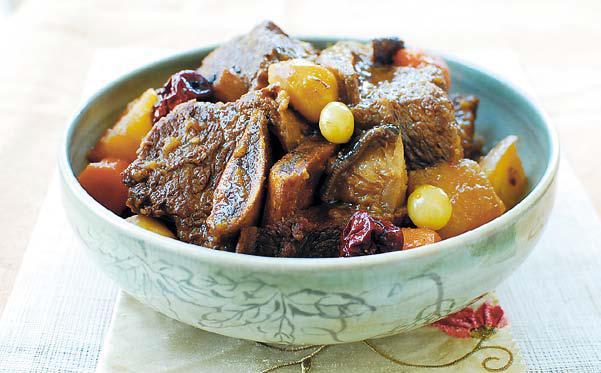 |
| Galbijjim (Korean Bapsang) |
3-4 servings
Ingredients:
● 1.5 kilograms meaty beef short ribs
● 1/2 small onion
● 3-4 thin ginger slices
● 5 plump garlic cloves
● 3 white parts of scallions
Braising liquid:
● 1/2 cup soy sauce
● 3 tablespoons sugar (2 for less sweet ribs)
● 2 tablespoons honey
● 1/4 cup rice wine
● 2 tablespoons of sesame oil
● 1/2 Korean pear, grated (about 1/2 cup)
● 1/2 small onion grated
● 1 tablespoon minced garlic
● 1 teaspoon grated (or juiced) ginger
● 1/2 teaspoon black pepper
Vegetables:
● 300 grams (10 ounces) Korean radish, cut into large chunks
● 3-4 dried shiitake mushrooms, soaked and quartered
● 2 carrots, cut into large chunks
Optional garnish:
● 6-8 peeled fresh chestnuts
● 6-8 dried Korean dates/jujube
● 10-12 gingko nuts (or 1 tablespoon pine nuts)
Trim off any excess fat. Rinse the ribs, and let them sit in cold water for about 30 minutes to draw out excess blood. Drain. In a large pot, bring 4 cups of water to the boil. Add the ribs and the next 4 ingredients (onion, ginger, garlic and scallions). Bring it to a gentle boil, uncovered. Skim off the scum on the top. Reduce the heat to medium and cook for 30 minutes.
Remove the ribs, reserving the stock. Strain the stock and skim off the fat. (Refrigerating the stock will help the fat solidify for easier removal. If you have room in the freezer, this process will be faster.)
Mix together all the braising liquid ingredients. Return the ribs to the pot. Pour the braising liquid over the meat. Set it aside to marinate for about 30 minutes.
Meanwhile, prepare the vegetables.
Add 2 1/2 cups of the stock to the marinated ribs. Cover and bring it to a boil. Reduce the heat to medium low, and simmer for 30 minutes. Stir in the vegetables, leaving out the optional garnish ingredients. Continue to simmer, covered, for about 20 minutes.
Stir in the optional garnish ingredients. Return to simmer, uncovered this time, for an additional 10-20 minutes, or until the sauce is thicker and the meat is tender but not falling off the bone.
Tips:
At this time, adjust the heat level and cooking time, depending on how tender you want your ribs to be and how much sauce you like to have.
Use medium-low heat and additional time for more tender meat with more sauce.
Likewise, you can increase the heat to medium to reduce the sauce faster. Also, leaving the pot uncovered during the last 10-20 minutes gives the ribs a nice sheen.




